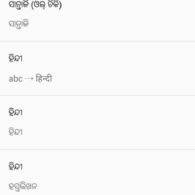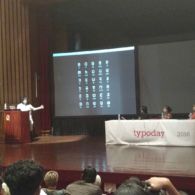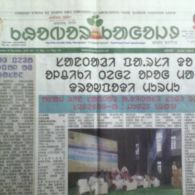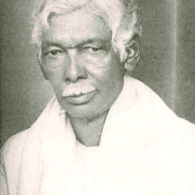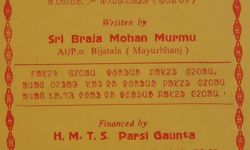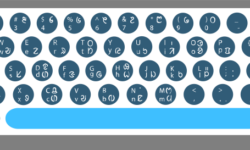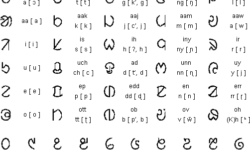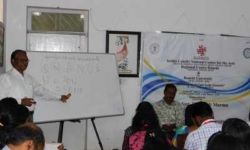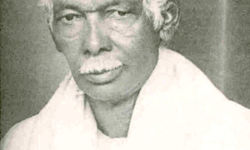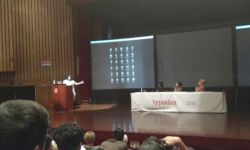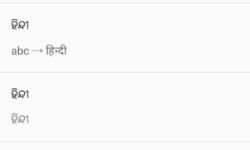Profile
The Ol Chiki script–the word ol means “write,” and chiki means “script”–was invented by Pandit Raghunath Murmu between 1925 and 1939 to write Santali, a language spoken in the Indian states of Jharkhand, Odisha, West Bengal, Assam, and Tripura, and also in Nepal and Bangladesh.
As has happened a number of times in Asia, this was an act of cultural promotion, an effort to gain respect: in India, a language that does not have its own script is often at a disadvantage — sometimes a vast disadvantage — politically, economically, and in terms of respect. As a script, it’s not only indigenous but ingenious, created so as to make it easy to learn, using a series of built-in visual cues or mnemonics.
One letter, for example, represents a sickle used for cutting or reaping; others depict a vessel used for preparing food, a peak of an unusually high mountain, a mushroom. Some are a kind of visual onomatopoeia. A flying bee becomes the bee-letter representing a buzzing sound; a vomiting-mouth-shape which produces the same sound as the name of the letter.
Raghunath was honoured by the Orissa state government, and, more recently, his creation has benefited from an unusually far-sighted multilingual education program that supports linguistic diversity in Jharkhand.
The program’s full title is Mother-Tongue-based Active Language Learning, or M-TALL.
They began in 2011 by conducting a statewide sociolinguistic survey that discovered — and this is hardly a surprise in India, with its affinity for “official” languages but a vast diversity of indigenous languages — that 96% of children in Jharkhand spoke tribal and regional languages rather than Hindi at home or in the playground, and in fact they had great difficulty understanding their teachers who spoke Hindi, and textbooks written in Hindi.
By 2014 the program had developed bilingual picture dictionaries in nine tribal and regional languages, and began setting up language centers in multiple districts. By 2016 new textbooks were ready in 16 languages, printed not only in the standard Devanagari script but also in Ol Chiki, for the Santali language, and Warang Chiti, for the Ho language.
As a result, the script is being increasingly used by Santals, not only in Jharkhand but West Bengal, Odisha, and Assam, and in neighboring Bangladesh and Nepal. Presently in the West Bengal, education is imparted in Santali from Class One to the Master’s level using the Ol Chiki Script. At North Odisha University, the Bachelor’s and Master’s-level education are provided in Santali language using Ol Chiki script.
It has appeared on railway station signs in Santali-speaking areas of Jharkhand, and on the governor’s residence, and most recently, a Wikipedia edition in Santali has been launched, using downloadable Ol Chiki fonts.
Update June 2023: The President of India just tweeted in Ol Chiki. It doesn’t get much more official than that.
Update January 2025: Ol Chiki script for Santali is now in Google translate, text to speech is also working in Ol Chiki Script, and even speech to text is also development a stage by the government of India under the project AI for Bharat.
You can help support our research, education and advocacy work. Please consider making a donation today.
Links
General Script, Language, and Culture Resources
- Omniglot
- Wikipedia
- Ol Chiki App
- Digital Resources for Ol Chiki
- Scriptsource
- Santali Society Ol Chiki Video
- Ol Chiki script learning app
- Santali Wikipedia page in Ol Chiki script
- Indian government Santali page
- Online Santali magazine
